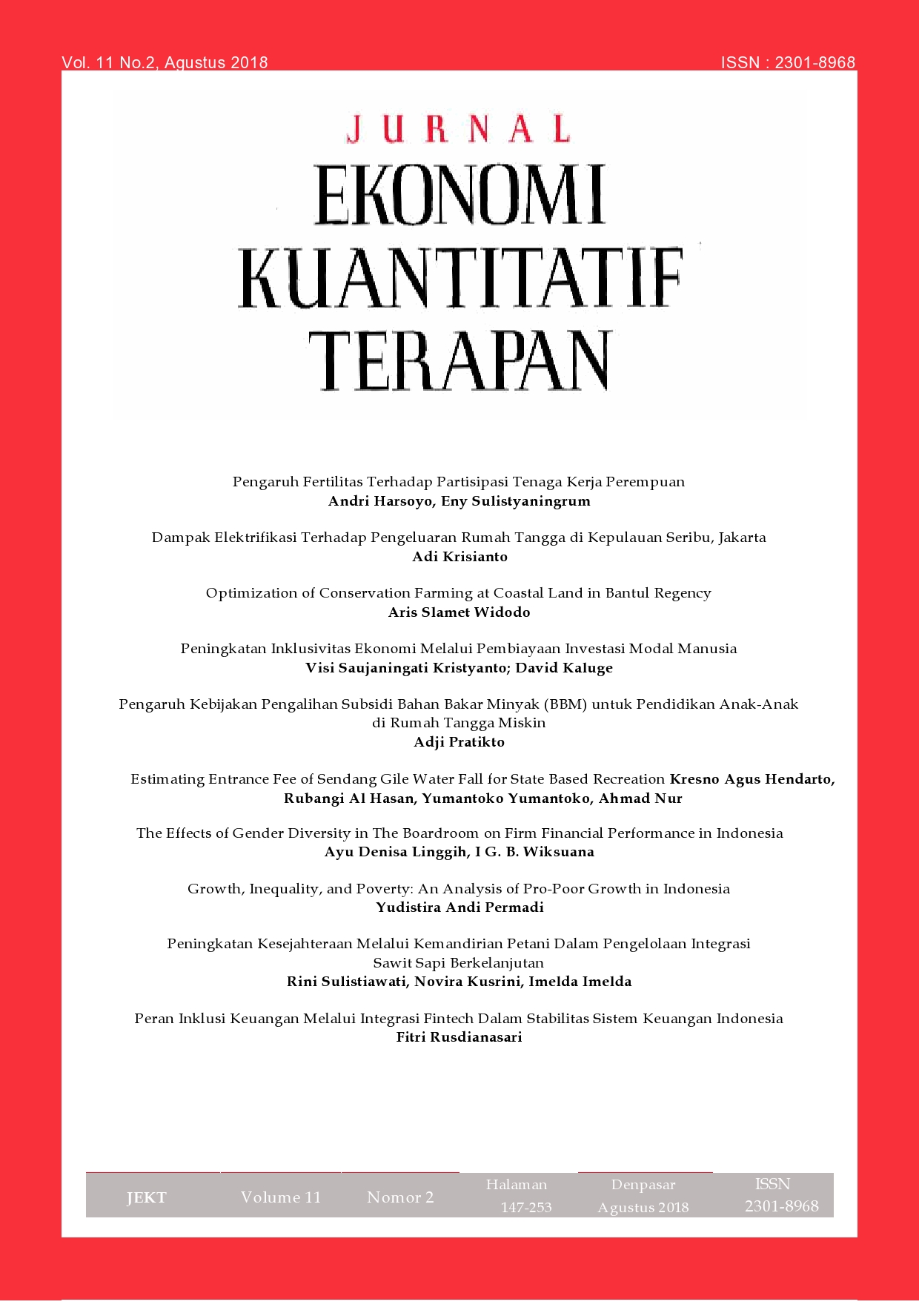Peningkatan Inklusivitas Ekonomi Melalui Pembiayaan Investasi Modal Manusia
Abstract
At present, inclusive growth is a major issue in economic development. Inclusive growth encourages individuals to access education, health and other components that support a better standard of living. In East Java, high economic growth is followed by a high level of income inequality. The role of government is needed to encourage more quality growth through investment financing in the form of education and health investments. The purpose of this study is (i) to determine the relationship between financing of human capital investment and economic growth and (ii) to determine the impact of financing human capital investment on growth inclusiveness in East Java. The analysis method uses simultaneous regression method with two main equations. The findings show that financing of human capital investment has a significant effect on economic growth. This means that human capital investment can be used as an alternative policy to encourage economic growth in East Java. However, there is a problem that only a certain percentage of people with high levels of education, health and purchasing power enjoy economic growth. The second finding explains that inclusiveness can occur if the government encourages the effectiveness of financing the education sector which is still limited to increasing quantity but weak in the quality and productivity of the education sector. So that the existing human resource capacity is not able to encourage the creation of growth inclusiveness in East Java.
Downloads
References
Bank Indonesia. 2016. Kajian Ekonomi Regional Jawa Timur Triwulan 2016. http://www.bi.go.id/id/Default.aspx
Bank Dunia. 2011. Diagnosa Pertumbuhan Ekonomi Jawa Timur: Mengidentifikasi Hambatan-Hambatan Utama Pertumbuhan yang Inklusif di Provinsi Terbesar Kedua di Indonesia. Jakarta: Bank Dunia.
Bhattacharyya, S and Resosudarmo, B P. 2014. Growth, growth accelerations, and the poor: lessons from Indonesia. World Development, (Vol. 66): 154-165.
Burja, C., & Burja, V. (2013). Education’s contribution to sustainable economic growth in Romania. Procedia - Social and Behavioral Sciences, 81, 147–151. https://doi.org/10.1016/j.sbspro.2013.06.403
Klasen, Stephan. 2010. Measuring and Monitoring Inclusive Growth: Multiple Definitions, Open Questions, and some Constructive Proposals. ADB Sustainable Development Working Paper Series No. 12.
Kuncoro, Mudrajat. 2006. Ekonomika Pembangunan Teori, Masalah, dan Kebijakan (Edisi Keempat). Yogyakarta: UPP STIM YKPN.
Mandlebe, W. (2014). Human Capital and Inclusive Growth: A Case Study of Botswana. Walden University. https://doi.org/10.1111/j.1467-8616.2008.00521.x Malik,
Pandey, J. K., Chintu, A. K., & Ranjan, R. (2014). Inclusive Growth In India : Some Empirical Facts. Jurnal Knowledge Horizons - Economics, 6(1), 2069.
[Prentice Hall, Greene] Econometric analysis, 5th ed.pdf. (n.d.).
Richard Samans, Jennifer Blanke, Gemma Corrigan, M. D. (2015). The Inclusive Growth and Development Report. Retrieved from http://www3.weforum.org/docs/Media/WEF_Inclusive_Growth.pdf
Samans, R., Blanke, J., Corrigan, G., & Drzeniek, M. (2015). Benchmarking Inclusive Growth and Development Discussion Paper. Switzerland.
Sen, K. (2014). Inclusive growth: When may we expect it? when may we not? Asian Development Review, 31(1), 136–162. https://doi.org/10.1162/ADEV_a_00022
Stata Corporation. (2001). Stata reference manual : release 7 (Vol. 3).
UNU-IHDPP and UNEP. 2014. Inclusive Wealth Report 2014 Measuring progress toward sustainability: Cambridge University Press.




















